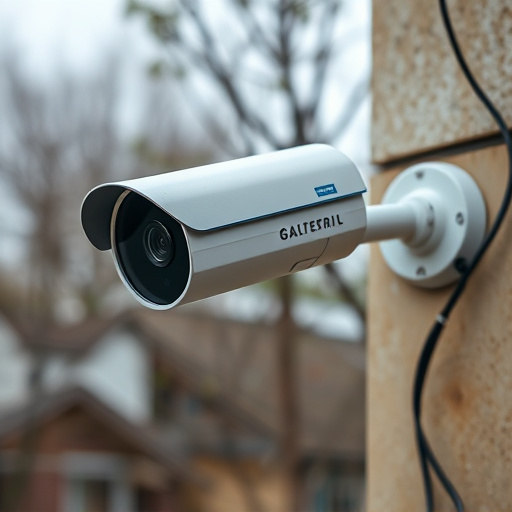Installation of fake surveillance cameras, or dummy cameras, offers a cost-effective way to enhance property security by deterring potential intruders who believe they're being watched. Strategic placement, in visible areas like entryways and windows, along with reflective surfaces, creates an illusion of comprehensive monitoring. However, these devices carry risks like false alarms and may encourage complacency about actual security measures. Legal and ethical considerations, including regional laws and community trust, must be navigated when deploying fake camera systems, emphasizing the need for responsible implementation as per a Fake Surveillance Camera Positioning Guide.
“Uncover the insidious world of fake security monitoring devices and their subtle yet potent impact on privacy and safety. This comprehensive guide delves into the motivations behind deceptive camera setups, exploring common placement strategies employed by nefarious actors. We dissect potential risks, from data breaches to false alarms, and examine legal and ethical considerations surrounding ‘mimicry camera systems’. By understanding these fake surveillance camera positioning tactics, stay ahead of threats and safeguard your environment.”
- Understanding the Motives Behind Fake Surveillance Camera Setups
- Identifying Common Placement Strategies for Deceptive Cameras
- Potential Risks and Implications of Using Fake Security Devices
- Legal and Ethical Considerations in Deploying Mimicry Camera Systems
Understanding the Motives Behind Fake Surveillance Camera Setups
The motivation behind installing fake security monitoring devices, often referred to as dummy cameras or decoys, can vary widely. For many property owners, it serves as a powerful deterrent against potential intruders, providing a sense of security and peace of mind. Strategically placing these fake surveillance camera setups can significantly reduce the likelihood of criminal activity, as would-be perpetrators may be less inclined to target areas with apparent security measures in place.
Moreover, fake Surveillance Camera Positioning Guides offer an affordable alternative for those looking to enhance their home or business security without investing heavily in sophisticated surveillance systems. By simulating the presence of actual cameras, these devices can act as a psychological barrier, making it harder for criminals to assess whether a location is truly secured. This simple yet effective approach to crime prevention is gaining popularity, especially among individuals seeking cost-efficient solutions to protect their valuable assets.
Identifying Common Placement Strategies for Deceptive Cameras
When setting up a fake security monitoring device, strategically placing deceptive cameras is key to making potential intruders think they’re under constant surveillance. Common tactics involve positioning cameras in highly visible areas like entryways, windows, and front doors, mimicking real security system components. Additionally, mounting them at eye level or slightly elevated angles offers the best field of view while remaining discreet enough to avoid detection.
Beyond basic placement, consider using reflective surfaces or strategically placed decoys to enhance the illusion of active surveillance. By creating a pattern of “eyes” around the property, you increase the psychological impact on would-be thieves, making them pause and think twice before attempting any illicit activity. Remember, the goal is to create an environment that feels secure, even if the technology behind it is not genuine.
Potential Risks and Implications of Using Fake Security Devices
Using fake security devices, such as a misleadingly positioned surveillance camera, can create a false sense of security for homeowners and businesses alike. While these devices may deter some potential intruders, they also carry several risks and implications that are often overlooked. One primary concern is the potential for false alarms, which can lead to unnecessary stress for residents and costly responses from security services.
Additionally, fake surveillance camera positioning guides might not align with actual security needs. This misalignment could leave vulnerable areas uncovered while giving a false impression of comprehensive monitoring. Moreover, the use of these devices may encourage unethical behavior, as individuals might become complacent, assuming they are under constant surveillance when in reality, their true security measures are inadequate.
Legal and Ethical Considerations in Deploying Mimicry Camera Systems
When deploying mimicry camera systems, or fake security monitoring devices, it’s crucial to navigate a complex landscape of legal and ethical considerations. These systems, designed to look like real cameras, raise questions about privacy rights and public trust. The placement of these faux cameras must adhere to regional laws and regulations regarding surveillance, which vary greatly around the world. For instance, some jurisdictions have strict rules on the visible presence of security cameras, while others permit more subtle positioning.
Ethically, the use of fake surveillance cameras can be a double-edged sword. While they may deter real crimes by simulating a robust security system, they also risk invasion of privacy and could foster an atmosphere of distrust if not implemented responsibly. It’s therefore essential to follow a comprehensive Fake Surveillance Camera Positioning Guide that balances security needs with individual freedoms. This guide should consider factors like the nature of the environment being monitored, local laws, and potential psychological impacts on the community.
Fake surveillance camera setups, while a concern, require heightened awareness and understanding. By identifying common placement strategies and recognizing potential risks, individuals can protect themselves from falling victim to these deceptive devices. This guide has provided valuable insights into the motives behind fake security monitoring, offering practical knowledge on how to spot and mitigate such setups. It’s crucial to stay informed and consider the legal and ethical implications when it comes to deploying mimicry camera systems, ensuring a safer and more secure environment for all.
